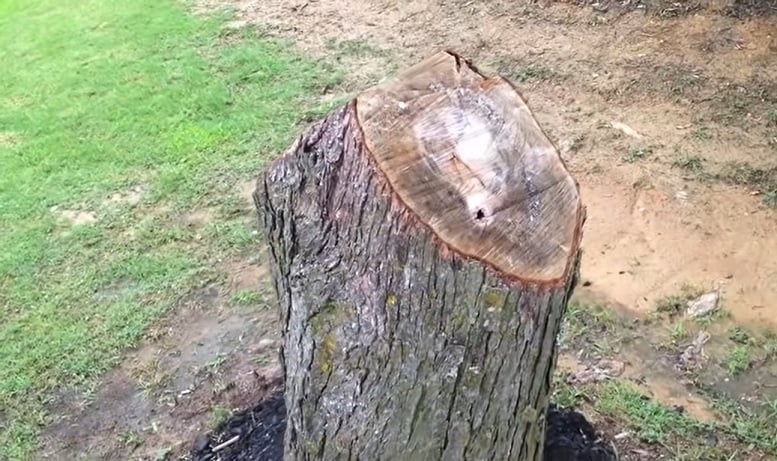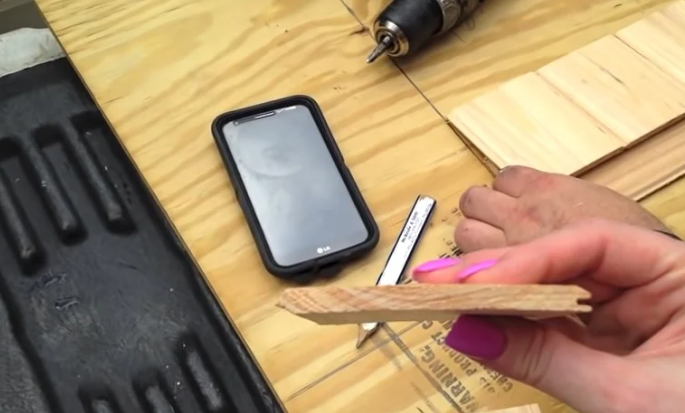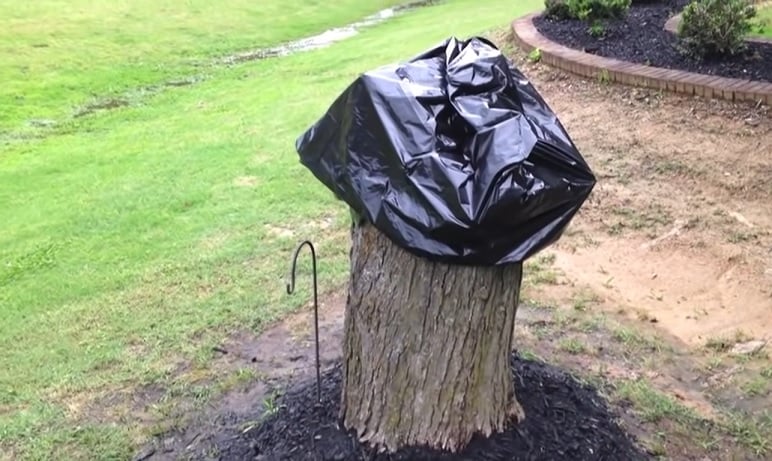Tree stumps are pretty hard to get rid of. When faced with a piece of the trunk that’s wider than you and weighs several hundred pounds, heavy equipment and a lot of help is the only way to get rid of it. You could always leave it be, sure. But the sight of a single tree stump in your backyard or front yard isn’t really the most pleasant thing to see.

While most of us opt for some old fashioned solutions, like cutting it down too or turning it into usable wood, Tennessee resident Mimi and her husband instead saw a dead tree stump as an opportunity to get a bit playful.
A tree stump would be great to convert into living space for something small! A cat maybe? Perhaps a squirrel or some birds?

The would-be resident they had in mind starts with a “G”. Here are a few hints : It’s Gnot a gnelf and it’s gnot a gnoblin. It’s a Gnome!
The pointy-headed, pint-sized, and sometimes bearded creatures aren’t a real thing (…as far as we know), but they are in a cultural sense. And they provide this couple with just what they needed: decoration.
Lawn Gnomes are a near household term, and probably every person living in the United States knows what they are. They give the garden a lively touch, and they just might guard your lawn too. At the very least, they’ll give the squirrels and birds some company.
As is typical with construction projects, measuring and planning had to come first. Her husband went and examined the appropriate measurements for the panels and roof that they’d place on the tree stump.

Garden Gnomes have seen use as decorations since the 1700s, though as indoor ornaments rather than on the lawn. These original Gnomes were crafted and fashioned from wood, rather than the terracotta and resin variety that most contemporary Garden Gnomes tend to fall under.
The crowing glory of this stump-turned-Gnome home is the Cedar shake roof, complete with its own individual, overlapping tiles.

It wears it on its top as proudly as a Gnome wears its hat.

Mimi wraps a trash bag (not a used one, don’t worry) around the top of the stump to protect the roof from a coming storm. When the rains are done, the project continues.
She thoughtfully considers what a Gnome would require in a living space, and decides on a hanging lantern as one of the first additions.
Her documentation of the project then resumes after an evidently long time off-camera, as the Gnome home is pretty much nearly complete when the video cuts back to it. Alongside the cedar roof and hanging lantern, Mimi and her husband went ahead and constructed some gnome-sized doors and windows to complete the piece.
And the tree stump’s new resident moved here all the way from the magical, far away land of Walgreens.

Let’s hope he’s happy with his new living space. And I hope no squirrels or birds decide to drop any of their unwanted, digested “decorations” on his house too. Though now for some Gnome trivia to get to know our tiny garden residents a bit better!
The word “Gnome”, with its distinctive silent “G”, seems derived from the Renaissance Latin word gnomus.
The man who coined the name, Paracelsus, appears to have anglicized it from gēnomos, itself a Greek word meaning “Earth Dweller”.
Gnomes, like such as Mimi’s gnew gneighbor (okay, I’ll stop), often appear in fantasy fictional stories and literature alongside other recognizable creatures like fairies, elves, and dwarfs (which they are sometimes treated as synonymous with). The Seven Dwarfs in Snow White, in particular, are clearly Gnomes going by a different name.
And if the garden variety are as fond of craftsmanship as their brethren in all those stories, then I hope Mimi’s little tenant appreciates the craftsmanship her husband put in to construct his little home.
Give it a watch below and tell me what you think!
Please SHARE this with your friends and family.